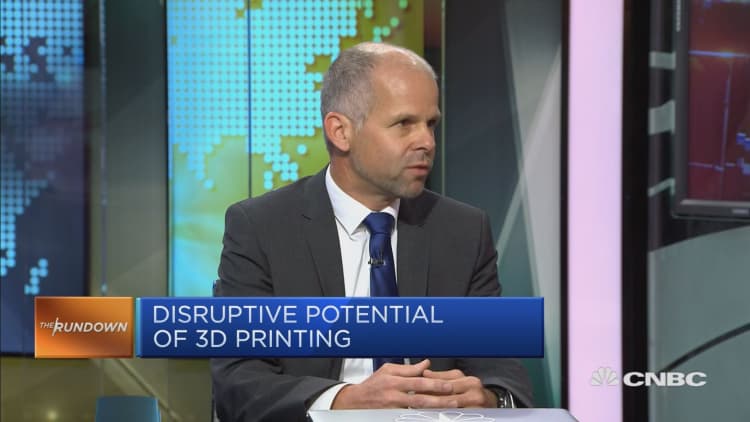Impossible Objects has developed commercial 3-D printers that can churn out parts that are ready to use in cars, planes, computers and more.
Many 3-D printers can form prototypes but not components that are structurally sound enough to be used in final products, especially if those products need to fly or drive.
According to Impossible Objects CEO Larry Kaplan, the company's technology works something like a laminator on steroids:
"You feed a stack of sheets into our printers that are made of non-woven textiles like carbon fiber, Kevlar or what have you. Then, something like an ink jet head prints a water-based solution on those to draw a cross-section of the object you want to produce. Each sheet goes into a system that drops plastic powder where the 'ink' is wet. You then heat and press the stack of sheets together. As the stack is pressed, the plastic powder forms into the shape you created, capturing the fiber."
Impossible Objects' Model One printers are already being used by major manufacturers in the U.S., chairman and founder Bob Swartz told CNBC. These include Jabil and Aurora Flight Sciences, the aerospace company recently acquired by Boeing.
Swartz said his start-up, based in Northbrook, Illinois, has newly closed a $6.4 million round of venture funding to make and distribute its printers and the materials that go in them. Investors included OCA Ventures and IDEA Fund Partners.
Impossible Objects' technology appeals to manufacturers because it works with composites including carbon fiber, Kevlar and fiberglass, Swartz said. These materials are both strong and lightweight, unlike metal and most plastics used with injection molding techniques or other 3-D printers.
The growing industry of 3-D printing, also known as additive manufacturing, generated $6.06 billion in revenue in 2016, according to the Wohlers 2017 report. Impossible Objects is not alone in the quest to make 3-D printers the new standard in manufacturing.
One competitor, Carbon, makes 3-D printers that can make a range of objects, including Adidas sneakers, from pooled resin and elastomers. Another, Desktop Metal, developed printers that make objects from any alloy. Both companies are backed by GE Ventures and Google's venture arm, GV.
Correction: Bob Swartz was not affiliated with mapping firm Navteq. Larry Kaplan was previously the CEO of that company.
WATCH: Manufacturers need to find out more about 3-D printing options



